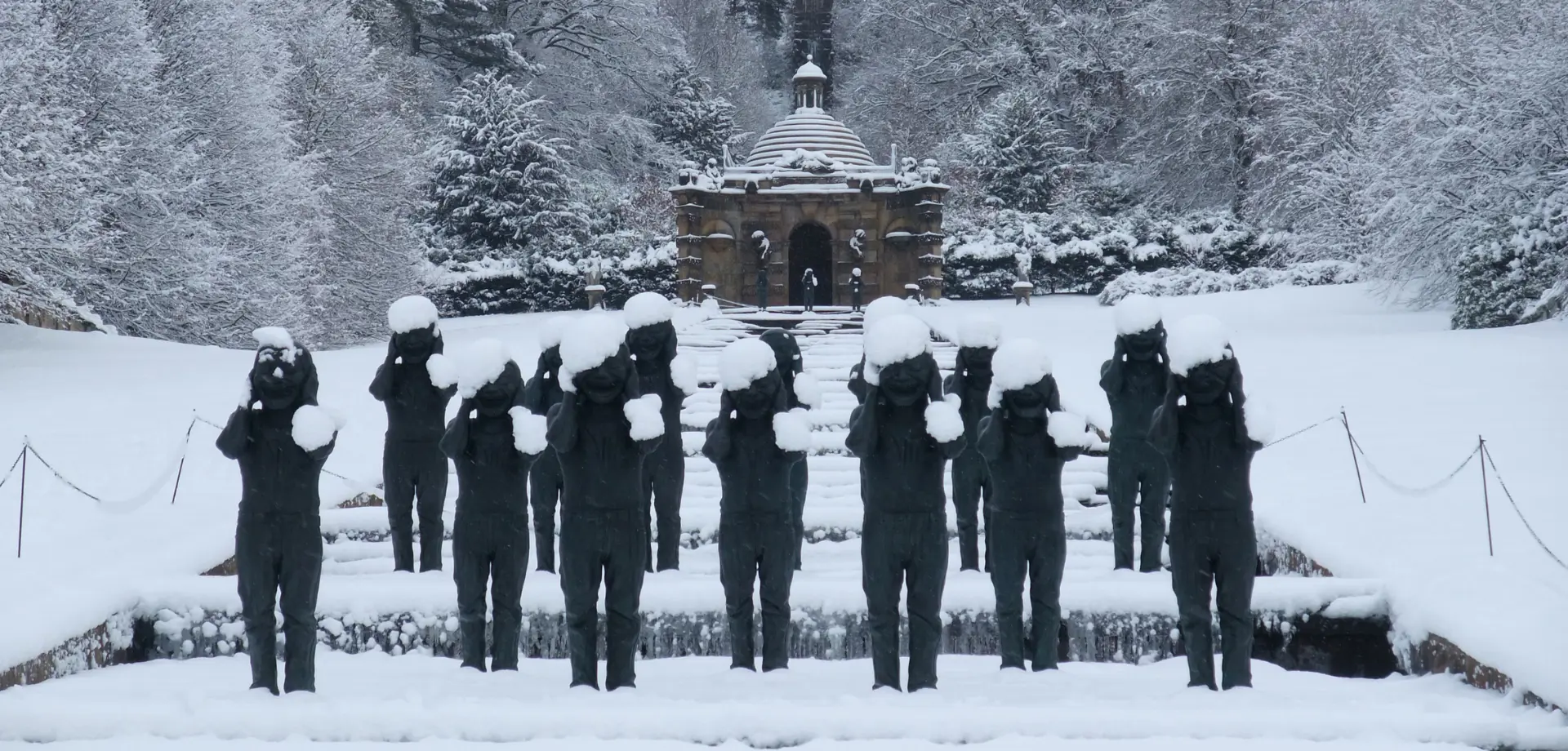It’s easy to be transfixed by the sight of the Cascade this festive season – illuminated at night as part of this year’s Christmas in the Garden celebrations and featuring thousands of blue and green lights that flicker either side of the stone steps, making their way up to the Cascade House where the doorway glimmers with mystical white light.

It’s easy too, to imagine that transforming the Cascade with lights and, indeed, illuminating key features throughout the 105 acre garden is a feature only of modern Chatsworth. But, throughout its history, Chatsworth has been a place of entertainment, spectacle and pleasure – seeking to impress, amuse and inspire generations of visitors.
For over 300 years at least, its water features have provided delight. The Cascade mimics a natural waterfall as it descends 60 metres. Playful and ingenious in design, each individual step has a different texture, shape and depth, to create a musical waterfall as each drop flows downwards.
On summer days, it has been a place where families have played, picnicked or just enjoyed running down its banks.

More recently, the Cascade has also provided an unexpected platform for modern art installations, hosting large pieces of sculpture to blend the old with the new.

‘Donna Sdraiata’ by Fernando Botero, Sotheby’s Beyond Limits 2012
Chatsworth has some of the earliest surviving water-fed garden ornaments in England. Two of them have hidden features to startle visitors. The Cascade Temple has a secret, playful water trick in the floor with a series of discrete holes through which, at a given signal, sudden spurts of water can be released to catch unsuspecting guests by surprise.
One visitor in 1725 reported how jets within the building ‘throw up several streams and wett people’. The spouts in the floor are still there.
Nearby is the Willow Tree Fountain – an imitation tree made of copper and brass that squirts water on the unsuspecting from its branches.
Celia Fiennes, the English traveller and writer, visited Chatsworth at the end of the seventeenth century and noted in her diary:
“There… in the middle of ye grove stands a fine willow tree, the leaves, barke and all looks very naturall, ye roote is full of rubbish or great stones to appearance and all on a sudden by ye turning of a sluice it rains from each leafe and from the branches like a shower, it being made of brass and pipes to each leafe, but in appearance is exactly like any willow.”
James Croxton who visited in 1862 wrote:
“We were in a party of which one member was a know-it-all. When we reached the willow, the gardener, with a malicious smile, appealed to our ‘expert’ for the name of the tree. Certainly he would just examine the formation of the leaf and be able to identify it easily. No sooner said than done. He stepped onto the grass and in that instant a thousand jets reporting their water streams upon his head. He made his escape soaking wet and drenched and ran into the bushes, and we saw him no more.”
The original tree, installed during the 1st Duke’s time, has been replaced twice and was most recently restored in 1983. You can see the tree illuminated as part of this year’s Christmas in the Garden.

And illuminating the Cascade in winter has been happening for at least 200 years. When Queen Victoria visited in December 1843, it was recorded that:
“The Cascade was lighted on either side to its source at the top of the mountain by 500 Russian flambeaux, and several fountains and jets d’eau in the gardens and terraces were illuminated at dark. The Orangery, with its exquisite sculptured reliefs, decorated with a number of Chinese lanterns, and otherwise lighted by additional lamps, contributed to carry the illusion of some oriental tale of enchantment and princely luxury, hardly compatible with the chilly clime of England.”
Accounts, such as these, offer a reminder of the Chatsworth’s ability to entertain and uplift. Income from admission, Gift Aid, membership and donations, allow Chatsworth House Trust to maintain and improve the garden and its water features so they can continue to entertain hundreds of thousands of visitors every year.
After centuries of use, charming and amusing visitors by both day and night, the Cascade is currently switched off to prevent further damage to the structure and the surrounding ground, where water has leaked through the steps on its way down to the River Derwent.
Chatsworth House Trust’s Celebrating the Cascade project offers the chance to be a part of restoring the Cascade by sponsoring a stone. For a donation of £100 or more, supporters can sponsor a stone within the twenty three steps of the Cascade, receiving a digital certificate with details of their particular stone, alongside the name of the loved one, family member or even a pet they would like to honour.
Supporters can also opt to have a commemorative handwritten printed copy of their certificate for themselves, or to gift to another.
Through the Celebrating the Cascade project, Chatsworth House Trust hopes that both water, and light, can once again bring joy to our visitors.




